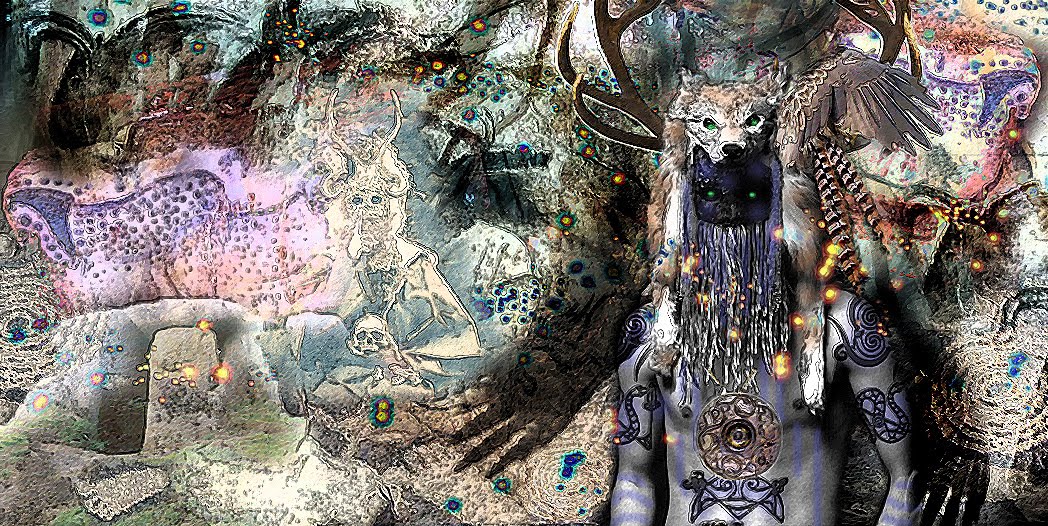Earlier in Spring I collected Texas Mountain Laurel flower cuttings and a bucket of Chittamwood
berries.
As with any plant, there are both positive and negative aspects. No
herb is entirely 'baneful'. The flowers of the mountain laurel offer
the sweetest poison temptation, so fragrant yet so toxic. How would I
use such a misleading plant? The sensuality and sheer beautiful energy
of this tree can be worked with if done so in care. Incense, simmering oils, candles,
inks, dried wreaths, amulets, and ritual kindling bundles are
all possibilities.
"Beyond their functions as agents of bodily harm, poisons have also
served as gateways of religious ecstasy, occult knowledge, and sensorial
aberration, as well as the basis of cures" -Daniel A. Schulke
For
the mountain laurel oil base I separated the heavily scented petals and
stamens with orange pollen from the green stems. The flowers smell like
the sweetest grape bubblegum but the wood puts off a heavy stink. Remember, do NOT use anything crafted from mountain laurel topically or ingest it without the guidance of properly trained herbalists. Even honey made with these sweet flowers can be deleterious. There are cases where toxins ingested by pheasants eating the berries and foliage were then passed on to hunters eating their catch. The medicinal uses according to Mrs. Grieve of Botanical.com:
"---Constituents---Leaves possess
narcotic poisoning properties and contain tannic acid, gum, fatty
matter, chlorophyll, a substance resembling mannite, wax extractive,
albumen, an acrid principle, Aglucosidearbutin, yellow calcium iron.
---Medicinal Action and Uses---Indians
are said to use the expressed juice of the leaves or a strong decoction
of them to commit suicide. The leaves are the official part; powdered
leaves are used as a local remedy in some forms of skin diseases, and
are a most efficient agent in syphilis, fevers, jaundice, neuralgia and
inflammation, but great care should be exercised in their use. Whisky is
the best antidote to poisoning from this plant. An ointment for skin
diseases is made by stewing the leaves in pure lard in an earthenware
vessel in a hot oven. Taken internally it is a sedative and astringent
in active haemorrhages, diarrhoea and flux. It has a splendid effect and
will be found useful in overcoming obstinate chronic irritation of the
mucous surface. In the lower animals an injection produces great
salivation, lachrymation, emesis, convulsions and later paralysis of the
extremities and laboured respiration. It is supposed, but not proved,
that the poisonous principle of this plant is Andromedotoxin.
---Preparations and Dosages---A
saturated tincture of the leaves taken when plant is in flower, is the
best form of administration, given in doses of 10 to 20 drops every two
or three hours. Decoction, 1/2 to 1 fluid ounce of powdered leaves from
10 to 30 grains. Salve made from juice of the plant is an efficient
local application for rheumatism."
http://www.botanical.com/botanical/mgmh/l/laumou12.html
The
first step in making Mountain Laurel oil, soaking the petals in a
light olive oil with a touch of rum. This will sit in a dark space to be
shaken every few days for a few weeks. Then the botanical parts will be
strained and I can work with the oil in various ways.
Crafting amulet bottles is one way to interact with and hear the voice of such plants. I have crafted these type of vial pendants using oil or dried herbs along with various curios. Both of the pendants below carry the leaves of bitter nightshade.
This tree is a beautiful evergreen that can grow to 25 feet. It has lustrous green pinnate leaves and fragrant wisteria-like
flowers that drop down in pink or purple bunches. It is extremely hardy and does well in my zone 8 and 9 yard. It is tough, extremely
drought tolerant, disease free,
and has outstanding ornamental qualities. Studies show that it requires
less than ½ the amount of water than a Crepe Myrtle tree requires,
making it an ideal xeriscape plant.
The seeds from native Texas Mountain Laurel trees were of great value to native American Indians in the region. They were worked into
ornamental jewelry as beads, and reportedly a strand of these seeds could be traded
for a horse.
Saturday, August 30, 2014
Crafting Hedge Besoms with Sweetgrass and Spurge Weed
Yesterday I made a variety of besoms ranging from 3ft to 1ft long. A majority of the materials used are hand gathered either in my garden or in local fields. I also added other fragrant dried herbs and grasses to them. I took a few of my long sweetgrass braids and unbound them, which gave me the most delicious smelling grass waves to work with. This larger example pictured above has a base of broom weed with sweetgrass and lichen covered twigs. Wild dove and guinea fowl feathers, vintage lace, as well as a bronzed triqueta finish the piece.
Pictured below is a small example of common spurge weed that grows in my hard Texas clay soil. They create very large low laying medallions that can be pulled up and tied into a tassel to dry. If you cut or trim them while they are fresh, you will see a white milky sap called 'latex' ooze out of each tiny stem. Not only does it make quite the sticky mess, it can cause skin irritation and is toxic in large amounts. Use gloves or wait until plant has dried before trimming. I tie these little bundles to various prepared sticks that I have collected- lime wood, rose wood, bougainvillea wood, live oak wood, butterfly bush wood... each with its own properties and associations. I love the waving pattern of bougainvillea especially for a small altar broom.
Burt the cat was not happy that I removed the spurge fluffs from his paws. He forgave me when I traded it for some freshly picked catnip.
Subscribe to:
Posts (Atom)














